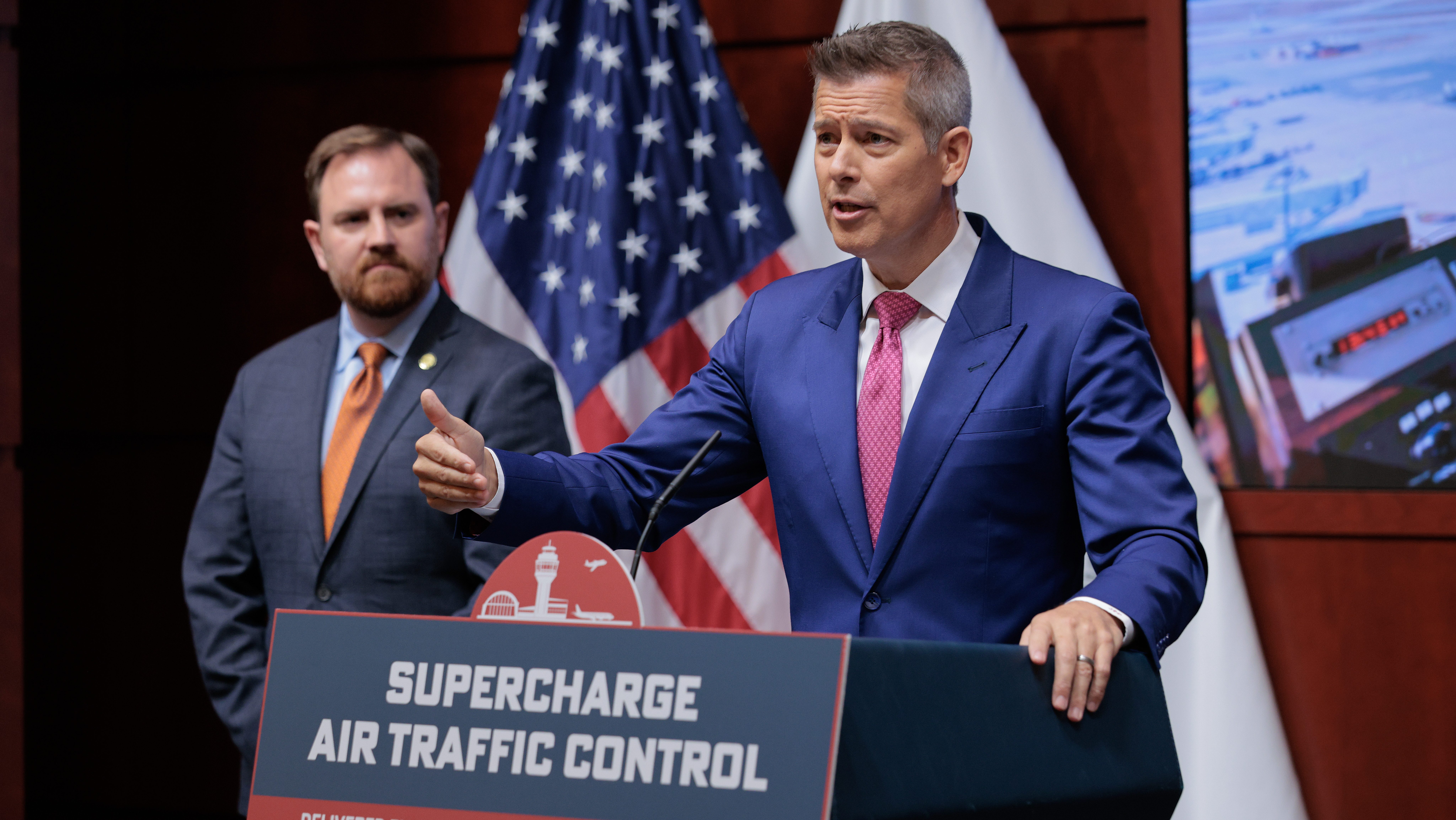FAA's $10K Bonuses: End Air Traffic Controller Shortage?
Soaring to New Heights: FAA's Bold Plan to Tackle Air Traffic Controller Shortage
Introduction: Clearing the Runway for a Smoother Future
Ever been stuck in airport limbo, staring blankly at the departure board, wondering what's causing all the delays? Chances are, a shortage of air traffic controllers might be partly to blame. Think of air traffic controllers as the orchestra conductors of the skies, ensuring planes take off and land safely and efficiently. Without enough conductors, the whole performance can become chaotic. That's why the Federal Aviation Administration (FAA) is stepping up its game with a new plan designed to attract and retain these vital professionals.
The Urgency of the Situation: A 3,000-Controller Gap
Transportation Secretary Sean Duffy recently unveiled a plan to "supercharge" the air traffic controller workforce. The situation is critical: the FAA is facing a shortage of approximately 3,000 controllers. That's like trying to run a marathon with a third of your team missing! This shortage can lead to increased delays, longer wait times, and a strain on the existing controllers. Addressing this shortfall is essential for maintaining the safety and efficiency of our national airspace.
Financial Incentives: Show Me the Money!
The FAA's new strategy centers on financial incentives. Let's face it, a little extra cash can be a pretty good motivator! The plan includes:
- $5,000 awards for new hires and graduates of the FAA Academy in Oklahoma City who complete initial qualification training.
- $10,000 awards for academy graduates assigned to one of the 13 hard-to-staff air traffic facilities across the country.
These bonuses are designed to sweeten the deal and encourage more people to consider a career as an air traffic controller. Think of it as a signing bonus for the aviation world.
FAA Academy: The Training Ground for Tomorrow's Controllers
Becoming an air traffic controller isn't a walk in the park. Entry-level applicants must complete rigorous training courses and spend several months at the FAA Academy in Oklahoma City. This academy is where aspiring controllers learn the skills and knowledge they need to manage the complex world of air traffic. Graduates must then undergo further training at their assigned facilities.
Hard-to-Staff Facilities: Filling Critical Gaps
The $10,000 bonus for graduates assigned to hard-to-staff facilities is particularly important. These facilities are often located in areas that are less desirable to live in or present unique challenges. By offering a financial incentive, the FAA hopes to encourage more controllers to take on these crucial roles. It's like offering hazard pay for keeping the skies safe!
Why is There a Shortage? Unpacking the Challenges
Several factors contribute to the air traffic controller shortage. These include:
- Retirements: A wave of retirements among experienced controllers has created a significant void.
- Attrition: The demanding nature of the job leads to some controllers leaving the profession.
- Training Backlogs: Past hiring freezes and training delays have exacerbated the problem.
The Benefits of Becoming an Air Traffic Controller: More Than Just a Paycheck
While the financial incentives are appealing, a career as an air traffic controller offers many other benefits. These include:
- Competitive salary and benefits.
- Job security.
- The satisfaction of contributing to the safety of air travel.
- A challenging and rewarding career.
The Impact on Air Travel: Fewer Delays, Happier Passengers
Addressing the air traffic controller shortage will have a positive impact on air travel. With more controllers on the job, we can expect to see:
- Reduced flight delays.
- Improved air traffic flow.
- Increased safety.
- Happier passengers!
Technology's Role: Modernizing the Airspace
The FAA is also investing in technology to modernize the airspace and improve efficiency. These technological advancements can help controllers manage air traffic more effectively and reduce workload. Think of it as giving the conductors a better sound system to work with.
Diversity and Inclusion: Expanding the Talent Pool
The FAA is committed to promoting diversity and inclusion in the air traffic controller workforce. By recruiting from a wider range of backgrounds, the agency can tap into a larger talent pool and create a more representative workforce.
Recruiting Strategies: Casting a Wider Net
The FAA is employing various recruiting strategies to attract qualified candidates. These include:
- Targeted advertising campaigns.
- Partnerships with colleges and universities.
- Outreach to military veterans.
Training and Development: Investing in the Future
The FAA is also investing in training and development programs to ensure that controllers have the skills and knowledge they need to succeed. This includes ongoing training to keep controllers up-to-date on the latest procedures and technologies.
Addressing Controller Fatigue: Prioritizing Well-being
Mitigating Stress and Burnout
Air traffic control is a high-stress job. The FAA is working to address controller fatigue by implementing strategies like improved scheduling and enhanced support systems. Because, after all, keeping controllers sharp is crucial to keeping us safe.
The Long-Term Outlook: A Brighter Future for Air Travel
With these initiatives in place, the FAA is optimistic about the future of the air traffic controller workforce. By attracting and retaining talented individuals, the agency can ensure the safety and efficiency of our national airspace for years to come. It's about building a stronger, more resilient system that can handle the growing demands of air travel.
Monitoring Progress: Holding the FAA Accountable
Tracking Key Performance Indicators
The effectiveness of these incentives will need to be carefully monitored. The FAA should track key performance indicators such as application rates, academy graduation rates, and retention rates at hard-to-staff facilities. This data will help to determine if the program is achieving its goals and make adjustments as needed. How else will we know if this investment is truly paying off?
Conclusion: Charting a Course for Success
The FAA's new financial incentives represent a significant step toward addressing the air traffic controller shortage. By offering bonuses to new hires and graduates assigned to hard-to-staff facilities, the agency hopes to attract and retain the talented individuals needed to keep our skies safe and efficient. While challenges remain, these initiatives offer a promising path toward a brighter future for air travel. Ultimately, this is about ensuring a safe and reliable aviation system for everyone.
Frequently Asked Questions
- 1. Who is eligible for the $5,000 award?
- The $5,000 award is available to new hires and graduates of the FAA Academy in Oklahoma City who successfully complete the initial qualification training.
- 2. What are the "hard-to-staff" facilities mentioned in the plan?
- These are 13 air traffic control facilities across the country that have historically struggled to attract and retain controllers, often due to location or other challenging factors. These locations are crucial to ensure air traffic flow across the nation.
- 3. How long does it take to become a fully qualified air traffic controller?
- The training process can take several years, including time spent at the FAA Academy and on-the-job training at assigned facilities. It's a demanding but rewarding journey!
- 4. What other benefits are offered to air traffic controllers besides financial incentives?
- Air traffic controllers typically receive a competitive salary, comprehensive benefits packages, and job security. Plus, they get the satisfaction of contributing to the safety and efficiency of air travel.
- 5. How will the FAA measure the success of this incentive program?
- The FAA will likely track metrics such as the number of applications received, academy graduation rates, retention rates at hard-to-staff facilities, and overall staffing levels across the country. Analyzing this data will provide insight into the program's effectiveness.



